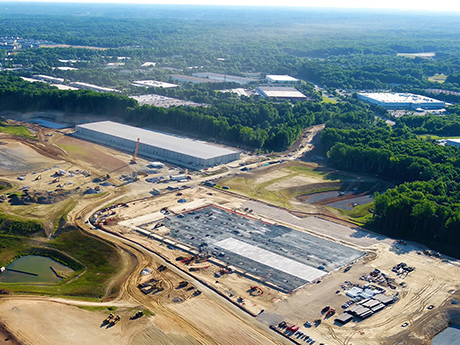The U.S. industrial real estate market continues to sustain, with national vacancy rates steadily creeping toward 7 percent (6.8 percent at the time of this writing). Over the past three years, the industrial real estate market continued to set records and became known as the darling asset class within the commercial real estate community. However, the market is showing signs of reversion to historical velocity and vacancy rates.

The industrial vacancy rate is steadily climbing in the Washington, D.C., metro area as demand softens for third-party logistics in second-quarter 2024. Vacancies are up to 6.5 percent after reaching an all-time low of 3.8 percent at the end of 2022.
The market remains tight by historical measures. However, normalized leasing velocity, a few large tenant moveouts and reduced demand is expected to provide upward pressure on the vacancy rate in 2025.
Subleasing activity trended upward in the past six to 12 months to over 1.3 million square feet. A few examples of large sublets include 393,000 square feet put on the market at Capital Gateway in Brandywine; Builders First Source moved out of 135,000 square feet at Plaza 500 in Alexandria; and in the second quarter, Western Express vacated 102,000 square feet after just two years of occupancy. The theme could be labeled as a reversion to the mean as consumers and businesses return to “just-in-time” models and away from the pandemic-inspired “just-in-case” model.
Development is still taking place, although at a much slower pace compared to 18 months ago. More than 6 million square feet delivered in 2022 and 2023 in the metro D.C. area, making for the largest two-year inventory expansion on record. Of note, the majority of new build-out is for larger modern logistics facilities to meet the changing needs of businesses.

Northern Virginia also boasts 7 million square feet of new data center developments underway, with more planned over the next five years. Data center development has thematically reduced new supply potential for new Class A, traditional warehouse space in Northern Virginia. New Class A development asking rates in Northern Virginia are currently at or above $20 per square foot on a triple-net basis.
Regionally, trailer storage and expanded industrial outdoor storage (IOS) have also been a theme, which was highlighted throughout the pandemic as a valuable asset. The subsector has now softened post-pandemic both locally and nationally due to reduced demands for expanded just-in-case outdoor storage requirements.
National Capitol Business Park, a development by Turnbridge Equities and Manekin LLC, is going through a two-phase construction plan spanning more than 3 million square feet in Upper Marlboro, Maryland. The project will meet demand proximal to the D.C. metro area and southern portion of the Baltimore-Washington corridor.
In Phase I, National Capitol Business Park has a little more than 1.3 million square feet completed with 827,000 square feet under construction and 562,000 square feet having already been leased. ARCO is slated to begin construction on the remaining 499,000 square feet this month and will start Phase II in the first half of 2027, which will generate an additional 1.5 million square feet of modern, Class A logistics facilities. The buildings in Phase I have 36- to 40-foot clear heights, employee parking planned to accommodate double per local codes and trailer drops equal to or greater than dock positions.
Development in the region has been limited due to zoning/land constraints, increased land and construction costs and municipal processes that increase the timelines and risks for build-out. Class A buildings bring an aura and an image that’s tough to replicate in older buildings, and businesses prefer that modern image for their customers, their employees and their brand. New buildings offer enhanced functionality and efficiency for business operations through energy efficiency, cubic storage volume, truck maneuverability and ample employee parking.
Seventy seven percent of the industrial buildings under 50,000 square feet in the immediate D.C. metro area, including parts of Northern Virginia and Prince George’s County, were built before 1995 and are characterized as less functional with lower clear heights (16 to 18 feet), smaller truck courts designed for box trucks rather than tractor-trailers and heavier office build-outs and/or mezzanine-style space.
The vacancy rate in these smaller buildings is still hovering around 3.8 percent, showing the depth of the tenant pool. Rent growth has also continued to trend upwards in this segment to over $16 per square foot in many cases around the D.C. Beltway.
Overall, aside from select pockets (such as the Dulles-Corridor), the sentiment is that industrial assets are holding strong. However, with more sublet space coming available and vacancy rates creeping up, more options exist for tenants performing a renewal or new location search.
Typically, more options means more competition to win tenant business. We won’t be in a tenant’s market from a technical perspective until we see the vacancy rate approaching 10 percent. However, tenants and landlords alike are taking note of current market conditions.
— By Bryan Herr and Oliver Fryer, vice presidents of brokerage at MacKenzie Commercial Real Estate Services. This article originally appeared in the November 2024 issue of Southeast Real Estate Business.


